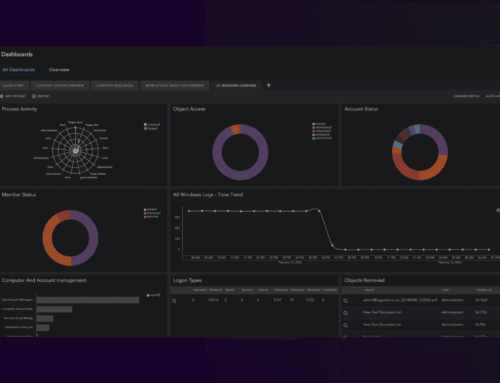Emails house a treasure trove of data, but what kind of data do they contain? How can it be targeted? And how can we protect ourselves from cyberattacks that solely aim to steal this information?
Cyberattacks are a monumental problem and are constantly on the rise, a huge 66% of small to medium-sized businesses around the globe have experienced a cyberattack in the past 12 months with 69% reporting that cyberattacks are becoming more targeted.
While many people think of ransomware and DDoS (Distributed Denial of Service) attacks as two of the biggest dangers, email is a prime — and often overlooked — target for a wide variety of different cyberattacks.
What data do emails house?
It might seem obvious that emails contain data, after all, they are a popular way of communicating inside and outside of companies and organizations and are therefore are inherently filled with data, like personal and company information. But many people don’t realize how much they can contain.
Emails have a wide variety of different types of data in both the content of the message, any attachments, and metadata. These can include:
- Names and contact information
- Financial information
- Passwords and login credentials
- Sensitive company information
- Personal information (like addresses, phone numbers, and social security numbers)
- Sender’s address
- Receiver’s address
- Time and date
- Subject
This data can be extremely valuable to cybercriminals. They can use it to gain access to accounts, steal money, or gain sensitive company information. Since email is often the gateway to other sensitive areas of the network, such as the corporate network or the cloud, cybercriminals often start their attacks by targeting emails.
Phishing scams are one of the most common types of cyberattack, and email is the perfect medium for phishing, as it’s often the first point of contact that a victim has with a scammer.
A phishing scam is an email or message that is sent to a potential victim in a bid to lure them into clicking on a link or opening an attachment. The goal of the scammer is to get the victim to give up sensitive information like passwords, login credentials, or financial information.
Are organizations ready and willing to tackle email security?
Cyberattacks are on the rise but are organizations prepared to tackle this growing threat and more importantly — how can they protect their email correspondence?
Education and training
Start from the ground up. One of the best ways to protect against email-based attacks is to educate employees on how to recognize phishing scams.
Phishing scams are becoming increasingly sophisticated and can be difficult to spot. Employees need to be trained on how to identify suspicious emails and what to do if they suspect that they may be a victim of a phishing attack.
Compliance is key
Increased cyber resilience across essential service providers is vital and that starts with compliance such as GDPR and NIS2. For example, the scope of service providers that must comply with the NIS2 directive is greater than the scope of the original NIS directive. By expanding the scope, the EU is making sure that all essential service providers are protected from cyber threats. For more on compliance and NIS2 head here.
Use strong passwords and authentication
Another way to protect against email-based attacks is to use strong passwords and two-factor authentication. This makes it much more difficult for cybercriminals to gain access to an account, even if they can obtain the password.
By having a second level of authentication, scammers essentially need to break two locks in order to gain access to any data. And if the second level of authentication resides on a different device or with another person, it can become almost impossible for a bad actor to get access.
Use encryption
Encryption is another important tool in the fight against email-based attacks. Encrypting emails makes it much more difficult for cybercriminals to read them, even if they can intercept them. Much like two-factor authentication, encryption necessitates another step before a cybercriminal can take advantage of any data they have acquired.
Organizations should consider encrypting all email communications, especially those that contain sensitive information.
Limit admin access
Only give admin access to those who need it and make sure that all admin users have strong passwords and two-factor authentication enabled. The fewer people that have access to sensitive information means fewer links in the chain that can be targeted.
And when it comes to cybersecurity — all it takes is one weak link.
Use an MSSP service
Some organizations and companies should consider using a Managed Security Service Provider (MSSP) to help with email security. MSSPs can provide a wide range of services, including 24/7 monitoring, intrusion detection and prevention, and malware removal.
How Logpoint can help secure your email environment
Logpoint’s converged SIEM solution provides email protection that uses a combination of machine learning and advanced analytics to detect and block email-based threats.
Our Email Protection solution includes the following features:
Phishing detection
Logpoint’s machine learning algorithms are constantly learning and evolving, which means that we are able to detect even the most sophisticated phishing attacks.
Malware detection
We use advanced analytics to detect malicious attachments and links and block them before they can reach your users.
Spam filtering
Logpoint’s spam filter blocks unwanted and unsolicited emails so that your users only receive the emails that they need.
In addition to our Email Protection solution, we also offer a wide range of other security solutions that can help you protect your organization from cyberattacks.
To discover how Logpoint can help secure your email environment, contact us today.







